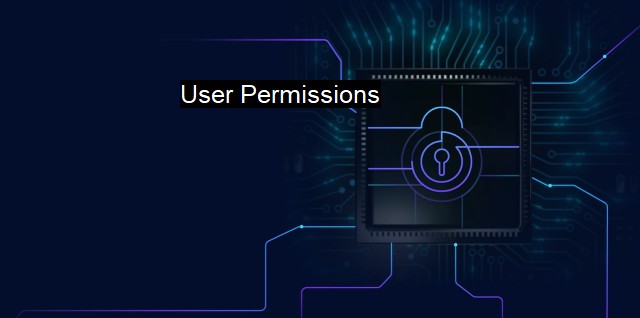What are User Permissions?
Enhancing Cybersecurity and Antivirus Protection with User Permissions: Exploring the Fundamental Component
User permissions, with are crucial to the protective measures that limit and control the access or activities that users can perform with a system or service. These permissions are typically allocated by the system administrator and can vary widely based on the needs of an organization, the specific roles of different users within the system, and the level of trust designated towards these users.A primary principle of user permissions lies in the concept of "least privilege." This means that each user should only possess the minimal set of permissions required to execute their job functions. This approach minimizes the occurrence of potential damage or security breaches. if a user does not need access to sensitive customer data, they should not have the permission to access it.
User permissions operate on the basis of different authentication levels, each providing diversified access, and encompassing different zones or sectors within a system or network. Common types include read, modify, execute, delete, and full control. Access permissions depend on a user’s role. An administrator, for instance, typically has the broadest levels of access including ‘write’ or ‘full control’ permissions that may allow installing, uninstalling, accessory configuration, and data handling.
The significance of user permissions further extends into the field of antivirus software. This sector banks on using administrative rights to scan, detect, and neutralize threats or potentially harmful programs. By limiting the permissions and defining what actions each user can or cannot perform, it contributes explicitly to tackling threats, unnecessary downloads, and illegal activities.
In a common scenario where an uneducated user unknowingly opens a malicious file, enabling malware to infiltrate the system - if this user had been operating with limited permissions that didn't allow installation or alteration of system files, the simple act of opening a file would not have wrought catastrophe on the system.
The implementation of user permissions is not an entirely foolproof process. Limited permissions could prevent the installment of critical updates, or the functioning of certain applications that require full administrative rights to run. In some cases, if malware manages to make it on to a system, and a user has full administrative rights, the malware can also usually perform actions with the same level of privilege.
There are solutions to these drawbacks, like providing temporary administrative permissions or having a responsible system manager frequently updating systems and ensuring their security. The idea of User Access Control (UAC) also allows a more gradual distribution of permissions that bridge safe system operation with practical functionality.
It’s important to stress the need for ongoing user education and phased integration of permissions. As cyber threats evolve, it is equally vital for users to understand the dangers of excessive permissions and irresponsible activities. By practicing vigilant cyber hygiene and employing robust antivirus solutions, the management of user permissions becomes a meaningful cog in the composite machinery of cybersecurity.
User permissions represent the heart of secure, responsible system management. They directly dictate what each user can do, thus providing control over the number of actions each user can perform, and significantly reducing the likelihood of a security breach. While the process isn't flawless and bears some challenges, effective administration of user permissions and continuing user education paves the way to a heightened level of security and configurations within cybersecurity.

User Permissions FAQs
What are user permissions in the context of cybersecurity and antivirus?
User permissions refer to the levels of access that individuals or groups have to certain files, systems, or resources. In the context of cybersecurity and antivirus, it means controlling who can access, modify, or delete certain sensitive data or settings.Why is it important to manage user permissions in cybersecurity and antivirus?
Managing user permissions is critical to prevent unauthorized access, data breaches, and malware attacks. By controlling access to sensitive data and systems, organizations can reduce the risk of cyber threats and protect their assets from potential damage or theft.How can user permissions be managed in cybersecurity and antivirus?
User permissions can be managed through access control mechanisms such as authentication, authorization, and accounting. These mechanisms ensure that only authorized users have access to specific resources and activities, and track their activities to identify any suspicious or malicious behavior.What are some best practices for managing user permissions in cybersecurity and antivirus?
Some best practices for managing user permissions include implementing the principle of least privilege, regularly reviewing and updating user permissions, restricting access to critical systems and data, and providing regular security awareness training to users to promote safe and secure computing practices.| | A | | | B | | | C | | | D | | | E | | | F | | | G | | | H | | | I | | | J | | | K | | | L | | | M | |
| | N | | | O | | | P | | | Q | | | R | | | S | | | T | | | U | | | V | | | W | | | X | | | Y | | | Z | |
| | 1 | | | 2 | | | 3 | | | 4 | | | 7 | | | 8 | | |||||||